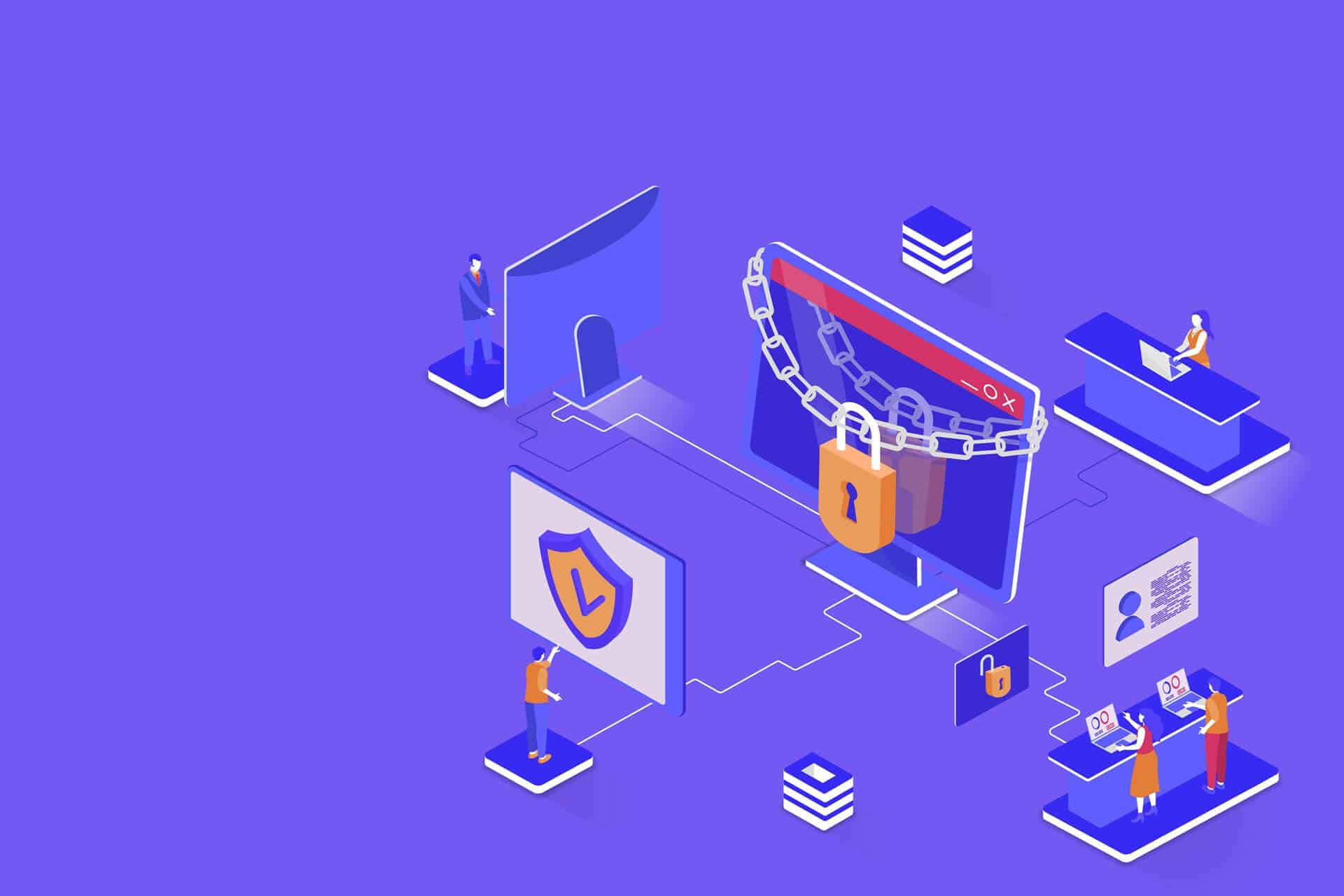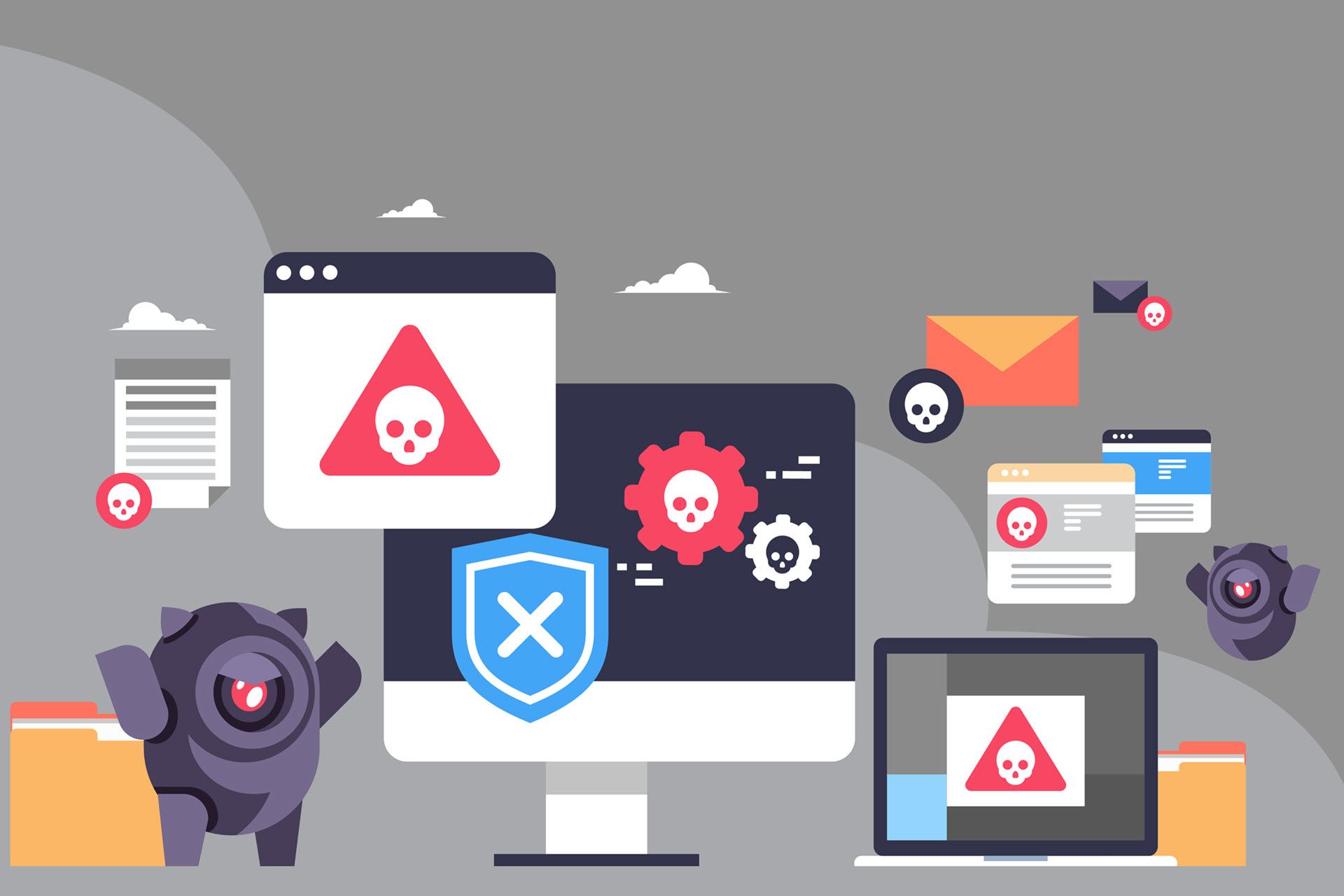The digital landscape is teeming with a variety of cyber attacks aimed at individuals and organizations that store their data and applications online. Spear phishing is a particularly menacing threat that targets specific individuals in an organization, intending to cause as much damage as possible to the company's data, finances, and reputation.
This article explains everything you need to know about spear phishing, how to prevent it, and how to identify spear phishing attempts before they cause further damage.

What Is Spear Phishing?
Spear phishing is a targeted phishing attack aimed at specific individuals rather than a large group of people.
It begins with meticulous research of the targeted individuals to discover their interests, roles, connections, and movements. To do this, malicious actors comb through their victims' social media profiles, company websites, public records, and other sources to design a personalized message that is likely to get a response.
The goal of a spear phishing attack is to gain access to company systems and networks, enabling the theft of data, unauthorized financial transactions, and damage to the company's reputation among customers and partners.
Learn about the tactics used in CEO fraud and find out how to protect yourself.
What Is the Difference Between Phishing and Spear Phishing?
Spear phishing is a more precise type of attack than regular phishing.
Namely, phishing casts a wide net by sending a general email to many recipients, hoping to draw in as many victims as possible. On the other hand, spear phishing is tailored to a specific individual. It appeals to a person’s interests and traits, hoping to gain trust and unauthorized access to sensitive information.
How Does Spear Phishing Work?
When performing a spear phishing attack, cybercriminals start by researching their potential victims to gather as much information as possible. They investigate their online presence to design a detailed attack that is unlikely to cause suspicion. In their messages, the attackers usually pose as colleagues or other trusted individuals. Through psychological manipulation and by creating a sense of urgency, they ensure the victim does not question their intent and grant them access as soon as possible.
The victim commonly grants access to the attackers by clicking on a malicious link or downloading an infected attachment. Sometimes, the target will be compelled to give out their personal information, especially if the attackers present themselves as the solution to an imminent threat. For example, the attacker will pose as a bank employee, claiming that the victim’s bank account has been compromised and asking for personal information to resolve the issue.
Once the victim provides access, the malicious actors use it to achieve their nefarious objectives, which range from stealing and altering data to delivering ransomware and making unauthorized money transfers.
What Is an Example of Spear Phishing?
Here are some common examples of spear phishing attacks to look out for.
- CEO impersonation. A junior employee receives an email from someone posing as the CEO, requesting unauthorized access or a money transfer.
- HR scam. An attacker poses as a member of the HR team, asking employees for bank information to resolve payroll issues.
- Supplier deception. Someone claiming to be a supplier sends an email to the company asking for a money transfer to a new account or inquiring about a confidential project.
- Event-related ploy. Attackers exploit human curiosity by sending malicious attachments disguised as photos or presentations from a recent event.
- IT support trick. An attacker impersonates IT personnel to trick the victim into downloading an attachment or clicking a link that contains malware or other harmful software.
- Research or survey tactic. The attacker persuades the victim to download a malicious attachment by pretending to conduct a survey or a study.
- News or crisis lure. The criminal poses as a charity organization in a crisis to appeal to a person’s compassion and encourage them to donate money.
- Legal intimidation. The malicious actor poses as a government or law firm individual, threatening legal consequences to an individual unless they click a deceptive link or divulge sensitive information.
How Do You Identify Spear Phishing?

There are several methods to detect a spear phishing attack before it happens.
- Unexpected requests. Beware of unusual or unexpected requests to send money or share sensitive information.
- Urgency and pressure. Stay vigilant when someone puts pressure on you or demands urgent action, especially if this involves granting access or sharing information.
- Mismatched email addresses. If the email address does not match the address displayed when hovering over it, it is most likely a phishing attack.
- Suspicious links and attachments. Always hover over a link or an attachment before opening it to check its legitimacy.
- Unusual tone or language. If you receive a message from a known contact that does not sound like them, this is most likely a malicious ploy.
- Insecure sites. Before visiting a website, make sure the address begins with https://. The “s” indicates encryption; so if it is missing, the site is not secure.
How to Prevent Spear Phishing?
Luckily, there are many ways to prevent spear phishing attacks.
- Education and awareness. Organizations maximize their vigilance by continuously training and testing their employees’ knowledge about spear phishing threats.
- Regular patching and software updates. This ensures that systems are updated with the latest security measures and policies.
- Multi-factor authentication (MFA). MFA provides an additional layer of security by asking for multiple confirmations of identity before granting access.
- Email authentication protocols. Protocols such as DMARC (Domain-based Message Authentication, Reporting, and Conformance) help to prevent email spoofing and domain impersonation.
- Email filtering. By employing email security best practices, such as filtering and checking sender details, organizations can prevent employees from downloading suspicious attachments.
- Network segmentation. Segmenting the network ensures that sensitive systems and data remain isolated from the rest of the network, helping contain the spread of malware.
- Restricting access and information sharing. This ensures that information is shared on a need-to-know basis, limiting leaks and data breaches.
- Endpoint security. Ensure that security policies are applied to all endpoint devices and tools to prevent a spear phishing attack.
- Incident response. Establish a clear incident response plan that staff can follow immediately in the event of an attack attempt to prevent the damage from spreading.
A Final Word on Cyber Safety
Spear phishing is a meticulously crafted cyberattack that targets a single individual and aims to cause as much damage as possible. People and organizations must stay vigilant online to protect their data and money from these vicious attempts. Cybersecurity does not rest solely on the IT department - to be truly effective, thorough preparation and active participation from the entire organization are required.



